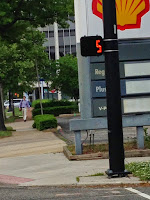Before moving to the USA, my wife and I took a house hunting trip.
During this trip, we staid at a hotel. The first days after moving here we also
staid in a hotel before actually moving into our apartment.
What surprised me during our stays at the hotels was the fact that
in the elevator, on the hall-ways everyone was saying hello and wishing us a
good day.
At first I perceived this as annoying, particularly because
Americans say hello by asking "How are you?". This apparent question,
is in fact a form of greeting and nobody expects and answer; in fact nobody
wants a honest answer.
After several "How are you"s and "Have a good
one" (meaning have a good day), I believed that this is the social norm around
here. From a certain point of view, it's kind of nice since it gives an
impression of living in a polite society.
After we moved to our apartment which is in a relatively high
building (14 floors) equipped with 4 elevators, things went differently. We
were the weird people who said “Hello” and “Good bye” or “have a nice day”.
Apparently, the social norm in the building(s) where we live is to
completely ignore other people, even if you come across them on the hallway
(people who live one or two doors away from you) or in the elevator.
In the Netherlands there was a joke that you live in the most densely
populated country in Europe and you don’t know your neighbors. That was partly
true, but here things are even worse. Here if you say hello or hold the door
for someone, you’re the weird one.











